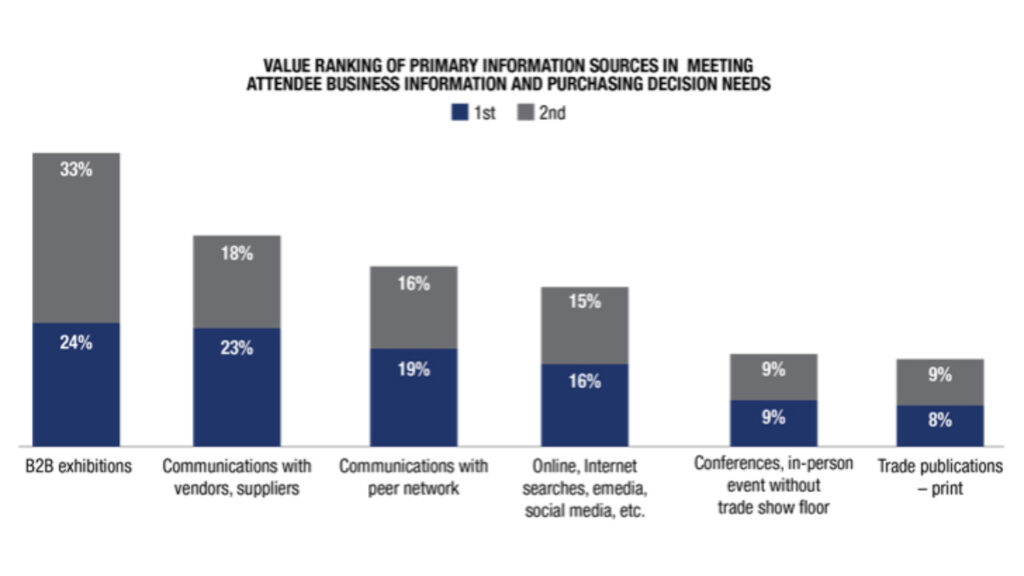A new CEIR survey reveals that business professionals value face-to-face engagement and existing relationships in their sources for business information and purchasing decisions.
A new CEIR survey shows the value ranking of a range of information sources for business professionals who attend B-to-B exhibitions.
Graphic: Courtesy of CEIR
Trade shows are the most valued source for getting information and making purchasing decisions, according to new a survey from the Center for Exhibition Industry Research.1 The report also emphasizes the importance of in-person interaction and existing relationships for exhibition attendees when judging the reliability of their sources.
CEIR released the second fact sheet of its Attendee ROI Playbook series on July 31. The report explored the variety of sources that business professionals who attend B-to-B exhibitions rely on to meet their business information and purchasing decision needs. Exhibition attendees ranked those sources by value, from most to least valuable.
Attendees ranked two categories, B-to-B exhibitions and communications with vendors and suppliers, first. But when looking at the share of first- and second-place rankings, B-to-B exhibitions was the top source, at 57 percent, while communications with vendors and suppliers received 41 percent.
“In terms of the attendees who participate in exhibitions and what they are trying to achieve while they are there, the needs have not really changed,” said CEIR C.E.O. Cathy Breden. “They are [at exhibitions] to shop and learn, to see new products, technologies, and trends.”
The report results suggest the high value of face-to-face engagement to business professionals. With access to more information through digital outlets, in-person interactions with both people and products are filters that help them determine which information they can rely on for business information and purchasing decision needs, according to the report.
“The trust factor comes into play when you meet someone in person rather than virtually,” Breden said. “The initial findings of the report tell us that one of the things that makes exhibitions unique is the face-to-face aspect of being able to build toward a relationship and getting to know the people behind the products being sold.”
Other aspects that distinguish B-to-B exhibitions as a valued source are the diversity of exhibitors in one place and the real-time access to suppliers, according to the report.
Along with exhibitions, the other sources that business professionals look to are communications with vendors and suppliers followed by communications with their peer network.
“The results just reaffirm again the need for creating experiential events that are going to be engaging and get people to engage with one another,” Breden said. “In our time now, trust in companies and governments is at an all-time low, and one of the ways to build relationships is by attending trade shows.”
The study comprised responses from more than 3,700 people chosen from attendee lists from a random sampling of 21 B-to-B exhibitions covering all industry sectors. In upcoming reports, CEIR will begin to analyze the results by sectors and demographics, Breden said.



